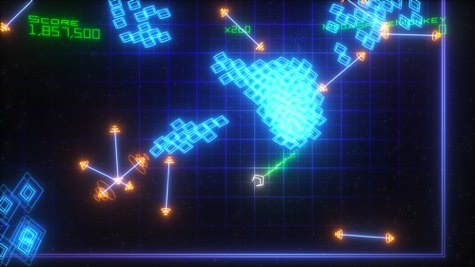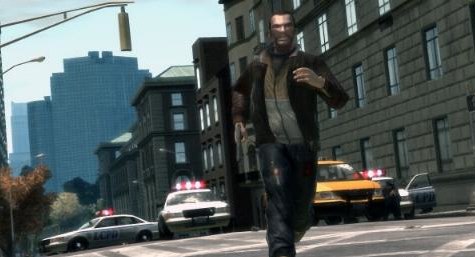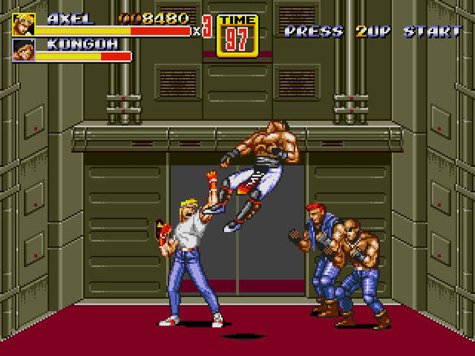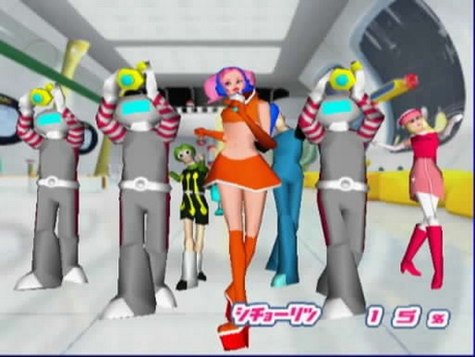-
"This is what the next generation of the mega-selling phone will look like. They'll be rough facsimiles of the high-end smartphones forged for well-heeled buyers, stripped of fat and excess—an embodiment of compromise. They'll be 90% of the phone for 20% of the price, with FM radios instead of digital music stores, and flashlights instead of LED flashes. This is how the other half will smartphone, if you want to be so generous as to call the developing world's users a half. We're not even close." Yes.
-
"Sahel Sounds rounded up music salvaged from the discarded mobile phone memory chips in West Africa." Wow; the after-life of dead electronic media made real.
-
"Board games are different. Sure, while you might love a board game for the sense of immersion it provides, or the way the game lifts off the table and fills the room, you also might love it for how beautiful the mechanics are. It’s like looking inside a clockwork watch. That fascination, as you see how all the pieces fit together, how everything is timed to perfection, how balanced it all is. With a beautiful board game design, you can love it for that craftsmanship you can feel with every turn." Yup. But, of course: this is, increasingly, why I like any game. It's just much more visible in boardgames – where you have to wrangle the rules yourself. And everything else – the immersion, the involvement – will come too; it just comes from that clockwork heart.
-
Nice write-up of the making of (the marvellous) Trainyard, both in terms of polishing and marketing.
-
"Halcyon is named for the mythological bird of ancient Greece, said to charm the winds and seas into a calm during the Winter Solstice. It is a spacial action puzzle game and interactive stringed instrument designed specifically for the iPad." Lovely.
Interesting North: Things Rules Do
15 October 2010
I’m going to be speaking at Interesting North in Sheffield in November. My talk – which is only about fifteen minutes long, if I recall right – is going to be called something like Five Things Rules Do, and, at the moment, is summarised thus:
The thing that make games Games isn’t joypads, or scores, or 3D graphics, or little bits of cardboard, or many-sided dice. It’s the rules and mechanics beating in their little clockwork hearts. That may be a somewhat dry reduction of thousands of years of fun, but my aim is to celebrate and explore the many things that games (and other systemic media) do with the rules at their foundation. And, on the way, perhaps change your mind at exactly what rules are for.
Contents subject to change, but I think it’ll be a fun one – and a great event. Perhaps see you there!
-
"Gamification is the wrong word for the right idea. The word for what’s happening at the moment is pointsification. There are things that should be pointsified. There are things that should be gamified. There are things that should be both. There are many, many things that should be neither. It’s important that we make the distinction between the two undertakings because, amidst all this confusion, we’re losing sight of the question of what would happen if we really did apply the deeper powers of game design to more everyday things – if we really did gamify them – and that question is a fascinating, exciting and troubling one. I really hope we get a chance to explore it properly." Margaret, on good form, as ever.
-
"I spent fifty-nine pounds and seventeen pence on Fifa 09′s Ultimate Team mode. That is painful to admit, and I had to check it three times. £59.17."
-
"One succeeds because it leverages the player's motivated, explorative, self-driven experience; the other fails because it relies on a hackneyed, disjointed "epic" plotting (told in 3 separate plot-lines via cutscenes) with incongruous settings and 2-dimensional characters. One succeeds because its formal systems directly feed the player's connection to the world and characters; the other fails because its formal systems bear no discernible relationship to the stories the game wants to tell." This is strong stuff from Michael; I am increasingly fed up of the focus on (poorly-told) stories in games.
-
"Know that there are no "accidents" in this game design. Everything you notice about the game, and every subtle interaction that you experience, is intentionally packed with meaning." (Gravitation, still, being my favourite of Rohrer's games, I think).
-
"Crucially, Goodrich entreats the public to note the following: "this change should not directly affect gamers, as it does not fundamentally alter the gameplay." This one statement should cause considerable distress, as it suggests a troubling conclusion about Medal of Honor as a work of public speech.<br />
<br />
To wit: it suggests that the Taliban never had any meaningful representation in the game anyway. If a historically, culturally, and geographically specific enemy can simply be recast in the generic cloth of "opposition," then why was it was called "Taliban" in the first place?<br />
<br />
And if the Afghan war in which the new Medal of Honor is set was one explicitly meant to drive the Taliban from their strongholds in Afghanistan, why should it matter that the game is set in that nation in the present day at all? In short, how was this Medal of Honor title meant to be a game about this war in particular?" This is a marvellous, critical piece of writing from Bogost. -
Nice post on Awk basics – most of which I knew, but the examples are still great, especially those involving variables. The links out to the Hacker News and Reddit threads are also full of good stuff.
GTA: West Side Story
04 October 2010
At some point in the pub after Playful, I got rambling about dance, and choreography – I forget why – and I blurted out the phrase “GTA West Side Story“. And when you name the game, you have to explain it.
This is a belated explanation.
I’m a sucker for good choreography. I’ve never really got on with musical theatre, or films of musicals, but god, good choreography is just fabulous. And in this age of fragmented, hyperlinked video, I can point you at some. I found this a few months back and was blown away:
This is the Nicholas Brothers in Stormy Weather. I’m not even a big fan of tap, but blimey, they can dance; there’s a lightness of touch and a terrifying strength all at once. I also love how it exhibits one of the great elements of choreography: it’s not always about people performing identical actions, but rather, sympathetic ones; their feet are locked in step with one another, but their bodies act sympathetically.
And then there’s the big finish, which is just showing off.
Anyhow: West Side Story is a funny one. Although I don’t care much for the main love story in it, it’s just great musically.
A lot of people have a problem with the dancing. It’s understandable: these guys are meant to be street-gang members, and yet they break into dance a lot. I can only explain this by with the golden rule, it seems, of musical theatre: you just have to get over that. That’s how people move in this musical (just as they express their innermost thoughts by singing them). Once you’ve got over that – just look at this:
As a piece of choreography – movements set to music – isn’t that marvellous? The basketball sequence!
And I keep thinking about this, not because I’m a good dancer, or because I like the act of dancing, but because: wouldn’t it be marvellous if, when you were walking around, everyone else knew the dance too – could snap in time with the music in your head?
And that’s where a game about choreography – and gangs – comes in. GTA: West Side Story.
In a nutshell: you recruit a gang by getting them to join your chorus, which tags along with you, and acts as strength-of-numbers when it comes to rumbles, not to mention looking awesome. It’s a bit like the way in Geometry Wars Retro Evolved 2‘s Pacifism mode you end up with a massive chain of diamonds following you:

except the diamonds are thugs, and they’re not out to kill you; they’re out to dance with you, to back you up.

So you pile through the city, with your own private gang, lockstepped, scissor-kicking as they turn corners.
Of course, not everyone can be in your chorus – in every movie musical, there’s always background talent that isn’t part of the chorus: and so part of the skill of the game is only “chaining” other gang members, who can definitely be part of the chorus – ie, they know the music, they know the words. Try to chain with a “civilian” and you’ll lose some of your posse. How do you identify a potential recruit? He’s the one doing something in time with the soundtrack – playing basketball, snapping his fingers, combing his hair. (Other civilians do these things too – but out of time).
And then there need to be rumbles: fighting as rhythm-action, dance-offs between rival gangs. Somewhere between Streets of Rage

and Space Channel 5.

It’s the video to Bad made game.
But, like all the best music games, it’s best when it’s not about competetive or combative elements; when you’re just about making pretty patterns, catchy, finger-snapping rhythms, and strolling around the turf you own.
Whilst dancing.
-
Seriously considering this for the new machine.
-
"…in honor of Canabalt's first birthday (back on September 1st), why not write a guided tour of how everything works instead?" Lots of good tidbits on here; the stuff on hitboxes is particularly well observed and explained.
-
This is all great.
-
I walked 4.5km down the A10, stopping every 200m or so to ask 10 unsuspecting passers by … "Excuse me, what area is this?" This is what I was told.
-
"We’ve just launched a project in collaboration with biochemist/photographer, Linden Gledhill for Canon’s PIXMA colour printer range. The project features surreal ‘sound sculptures’ made of dancing droplets of paint captured in extreme detail as they react to sound waves." Just beautiful.